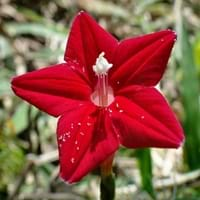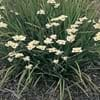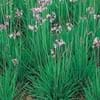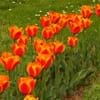Life Span
Annual and Perennial
Perennial
Type
Bulb or Corm or Tuber
Trees
Origin
South Africa
Asia, Europe, North America
Types
Not Available
Black Ash, Blue Ash, California Ash, Carolina Ash, European Ash
Number of Varieties
Not Available
Habitat
Subtropical climates, subtropical regions
Forest edges, Hillside, Woods
USDA Hardiness Zone
9-10
3-9
Sunset Zone
21,22
9, 12, 13, 14, 15, 16, 17, 18, 19, 20, 21, 22, 23, 24
Habit
Mat-forming
Oval or Rounded
Flower Color
Red, Magenta
White
Flower Color Modifier
Bicolor
Not Available
Fruit Color
Not Available
Not Available
Leaf Color in Spring
Gray Green
Dark Green
Leaf Color in Summer
Light Green
Dark Green
Leaf Color in Fall
Several shades of Green
Dark Green
Leaf Color in Winter
Light Green
Dark Green
Leaf Shape
Long, Alternate
Oblovate
Plant Season
Spring, Summer
All year
Sunlight
Full Sun
Full Sun, Part sun
Type of Soil
Loam, Sand
Loamy, Sandy
The pH of Soil
Acidic, Neutral
Acidic
Soil Drainage
Well drained
Well drained
Bloom Time
Late Spring, Early Summer, Summer
Late Spring, Spring
Tolerances
Drought
Drought, Pollution, Soil Compaction
Where to Plant?
Ground
Ground
How to Plant?
Seedlings
Grafting, Seedlings, Stem Planting, Transplanting
Plant Maintenance
Medium
Medium
Watering Requirements
Needs good drainage, Needs high amount of water
Does not require lot of watering, Medium, Prefer drip-irrigation instead of Over-head watering
In Summer
Lots of watering
Lots of watering
In Spring
Moderate
Moderate
In Winter
Average Water
Average Water
Soil pH
Acidic, Neutral
Acidic
Soil Type
Loam, Sand
Loamy, Sandy
Soil Drainage Capacity
Well drained
Well drained
Sun Exposure
Full Sun
Full Sun, Part sun
Pruning
No pruning needed, Prune to control growth, Remove damaged leaves, Remove dead branches, Remove dead leaves
Prune in winter, Prune prior to new growth
Fertilizers
All-Purpose Liquid Fertilizer, High-phosphorous fertilizers used
All-Purpose Liquid Fertilizer
Pests and Diseases
Pests and diseases free
Bark splits, Crown gall, Epicormic Sprouting, Woodpecker feeding
Plant Tolerance
Drought
Drought
Flower Petal Number
Single
Single
Fragrant Flower
Not Available
Yes
Showy Foliage
Not Available
Yes
Foliage Texture
Fine
Medium
Foliage Sheen
Matte
Glossy
Attracts
Butterflies, Hummingbirds
Birds
Allergy
Unknown
Not Available
Aesthetic Uses
Beautification, Ornamental use, Showy Purposes, small hedge
Not Used For Aesthetic Purpose
Beauty Benefits
Not Available
Not Available
Environmental Uses
Air purification
Air purification
Medicinal Uses
Anti-fungal, Purgative
Fever, Liver problems
Part of Plant Used
Leaves
Leaves, Stem
Other Uses
Beneficial species for attracting pollinators
Used as Ornamental plant
Used As Indoor Plant
No
No
Used As Outdoor Plant
Yes
Yes
Garden Design
Alpine, Container, Rock Garden / Wall, Tropical
Shady Tree, Showy Tree
Botanical Name
Ipomoea quamoclit
Fraxinus
Common Name
star glory , hummingbird vine
Ash Tree
In Hindi
Kunjlata
राख पेड़
In German
Ipomoea quamoclit
Esche
In French
Ipomoea quamoclit
Frêne
In Spanish
Ipomoea quamoclit
Fresno
In Greek
Ipomoea quamoclit
δέντρο Ash
In Portuguese
Ipomoea quamoclit
Freixo
In Polish
Ipomoea quamoclit
Jesion
In Latin
Ipomoea quamoclit
Fraxinum
Phylum
Magnoliophyta
Anthophyta
Class
Magnoliopsida
Magnoliopsida
Family
Amaryllidaceae
Oleaceae
Clade
Angiosperms, Asterids, Eudicots
Angiosperms, Asterids, Eudicots
Subfamily
Not Available
Not Available
Number of Species
Not Available
Properties of Cypress Vine and Ash Tree
Wondering what are the properties of Cypress Vine and Ash Tree? We provide you with everything About Cypress Vine and Ash Tree. Cypress Vine doesn't have thorns and Ash Tree doesn't have thorns. Also Cypress Vine does not have fragrant flowers. Cypress Vine has allergic reactions like Unknown and Ash Tree has allergic reactions like Unknown. Compare all the properties and characteristics of these two plants. Find out which of these plant can be used as indoor plant. If you are interested to decorate your house and garden, find out aesthetic uses, compare them and select the plant which will beautify your surrounding. Along with beautification, try comparing medicinal and edible uses of Cypress Vine and Ash Tree and you can choose the plant having best and most benefits.
Season and Care of Cypress Vine and Ash Tree
Season and care of Cypress Vine and Ash Tree is important to know. While considering everything about Cypress Vine and Ash Tree Care, growing season is an essential factor. Cypress Vine season is Spring and Summer and Ash Tree season is Spring and Summer. The type of soil for Cypress Vine is Loam, Sand and for Ash Tree is Loamy, Sandy while the PH of soil for Cypress Vine is Acidic, Neutral and for Ash Tree is Acidic.
Cypress Vine and Ash Tree Physical Information
Cypress Vine and Ash Tree physical information is very important for comparison. Cypress Vine height is 7.60 cm and width 7.60 cm whereas Ash Tree height is 75.00 cm and width 45.00 cm. The color specification of Cypress Vine and Ash Tree are as follows:
Cypress Vine flower color: Red and Magenta
Cypress Vine leaf color: Gray Green
Ash Tree flower color: White
- Ash Tree leaf color: Dark Green
Care of Cypress Vine and Ash Tree
Care of Cypress Vine and Ash Tree include pruning, fertilizers, watering etc. Cypress Vine pruning is done No pruning needed, Prune to control growth, Remove damaged leaves, Remove dead branches and Remove dead leaves and Ash Tree pruning is done Prune in winter and Prune prior to new growth. In summer Cypress Vine needs Lots of watering and in winter, it needs Average Water. Whereas, in summer Ash Tree needs Lots of watering and in winter, it needs Average Water.





